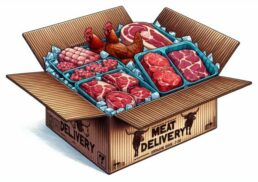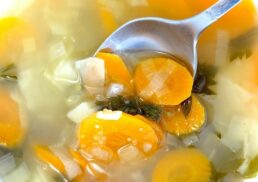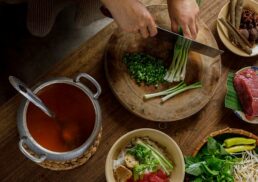Looking for the best meat? Finding the right butchers is essential. This article covers what butchers do, types of butcher shops, and tips for choosing the best one. Learn how to get the freshest, highest-quality cuts and enhance your meals.
Table of Contents
Key Takeaways
Butchers play a crucial role in cutting, trimming, and packaging meat, often learning through hands-on experience and focusing on quality, safety, and customer service.
Different types of butcher shops, like grocery stores, specialty meat shops, and meat delis, offer unique experiences and cater to varied customer needs, from specialized cuts to convenience options.
Shopping at local butchers provides benefits like fresher meat, support for local farmers, sustainable practices, and personalized customer service, enhancing the overall meat-purchasing experience.
Understanding the Role of a Butcher
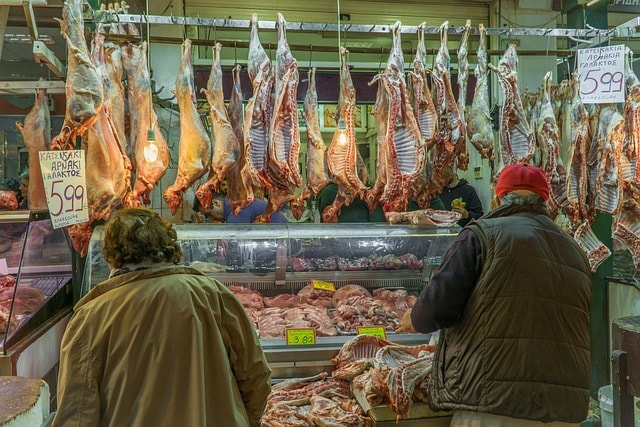
The role of a butcher is as fascinating as it is demanding. Butchers are the unsung heroes who cut, trim, and package meat for retail sale. They perform both primary butchery, which involves breaking down carcasses into primal cuts, and secondary butchery, where they prepare these primal cuts into smaller, retail-ready portions. The physical demands of the job are significant, involving repetitive motions, handling dangerous equipment, and working in cold environments.
Most butchers learn their craft through long-term, on-the-job training rather than formal education. This hands-on approach ensures they acquire the skills necessary to deliver high-quality cuts of meat to their customers. The artistry involved in butchery is something that evolves over years of practice, making each butcher’s style unique.
By delving into these aspects of a butcher’s role, we can develop a greater appreciation for the skill and dedication that goes into every cut of meat we purchase. Butchery is not just about cutting meat; it’s also about:
sourcing the best quality meat
understanding different cuts and their uses
practicing proper food safety and hygiene
providing excellent customer service
All of these factors contribute to the butcher’s goal of providing the highest quality product for your plate.
Learn more, check out What Does A Butcher Do? Roles And Responsibilities.
Types of Butcher Shops
Butchers can be found in a variety of environments, including:
Grocery stores
Specialty meat shops
Meat delis
Upscale restaurant
Each type of butcher shop offers a unique experience and caters to different customer needs. For instance, while specialized butcher shops have become less common in the U.S. and Canada due to the rise of supermarkets, they still hold a special place for those seeking top-quality and custom cuts.
Some types of butcher shops include:
Butcher shops that focus on specific cultural or national styles of meat production, offering products that reflect traditional methods and flavors
Meat delis that combine the services of a butcher with those of a delicatessen, providing a wide range of products, including charcuterie, hot food, baked goods, and groceries
Retailers that expand their offerings to include pre-prepared meats and party platters, catering to the growing demand for convenience.
If you’re after a specialized cut, longing for a taste of home, or in need of convenient pre-marinated meats, a suitable butcher shop is out there for you. Familiarizing yourself with the different types of shops can guide you to the perfect place for the freshest, tastiest meat.
Primal Cuts of Meat
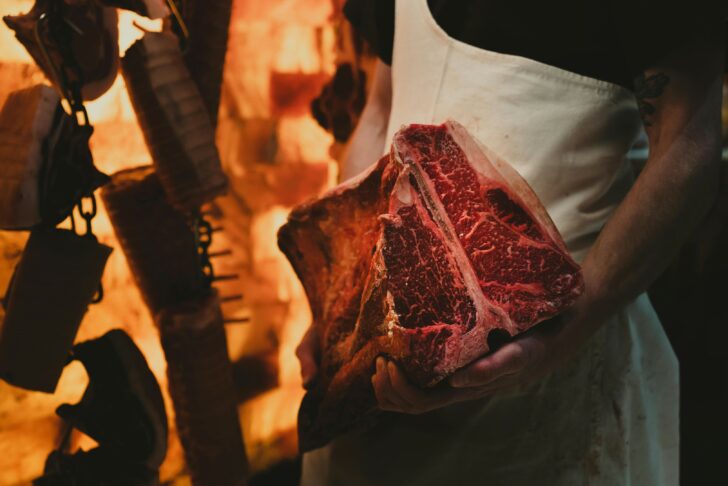
Primal cuts are the initial sections of meat separated from an animal’s carcass during butchering. These cuts are fundamental as they can either be sold whole or divided into smaller cuts for retail. Understanding primal cuts is crucial for both butchers and consumers, as it helps in selecting the right piece of meat for specific recipes.
For beef, the primary primal cuts include the round, loin, rib, and chuck. Each of these sections can be further broken down into steaks and roasts, offering a variety of options for different culinary needs. Pork primal cuts include ham, loin, Boston butt, and picnic. In Europe, fatback is an important primal cut, often used for sausage or lard, while in North America, it is less commonly recognized.
Veal and lamb also have their own set of primal cuts. Veal includes legs, loin, hotel rack, and square cut chuck/shoulder. Lamb, on the other hand, offers leg, loin, rack, and chuck as its primary sections. It’s interesting to note that terminology for some cuts can differ across regions; for example, what the British call sirloin is known as porterhouse in the U.S..
Being aware of these primal cuts and their regional variations can enrich your meat-shopping experience. With precise knowledge of what to request, you can secure the ideal cut for your meal, be it a tender steak, a juicy roast, or a succulent piece for grilling.
Quality Standards in Butchery
Quality in butchery is non-negotiable, and one of the key indicators of meat quality is animal welfare certifications. These certifications guarantee that the animals were raised and processed humanely, ensuring better meat quality. When you inquire about the source of the meat, it not only provides insights into its quality but also its sustainability.
Freshness is another critical factor. You can often judge the freshness of meat by its color: bright red for beef, pink for pork, and creamy white for chicken. A vibrant color indicates that the meat is fresh and has been handled properly from farm to table.
When these quality standards are given top priority, butchers and consumers alike can be certain that the meat they handle and consume is of supreme quality. This meticulousness results in superior taste, texture, and nutritional value.
Specialty Meats and Cuts
Top butchers often specialize in a variety of specialty meats and cuts, offering everything from Wagyu beef to unique regional offerings. Wagyu beef, renowned for its intense marbling, tenderness, and flavor, stands out due to its rigorous quality control system and specialized rearing and feeding practices. In Japan, Wagyu cattle are fed a diet that includes rice straw, maize, barley, and whole crop silage, ensuring the meat’s superior quality.
Grading Wagyu steak is primarily based on the amount of marbling, which contributes to its exceptional flavor and tenderness. This beef also boasts higher content of omega-6 and omega-3 fatty acids and monounsaturated fats compared to regular beef. Specialty cuts like the Santa Maria Style American Wagyu Beef Tri-Tip and homemade Wagyu Pastrami are just a couple of examples of the unique options available.
Butchers like those at The Butcher’s Tale in Minneapolis offer these specialty meats as part of their selection, providing customers with premium options that go beyond the usual fare. Whether you’re looking to impress at a dinner party or simply want to try something new, these specialty meats and cuts are sure to elevate your culinary experience:
Dry-aged steaks
Wagyu beef
Berkshire pork
Lamb chops
Duck breast
Benefits of Shopping at Local Butchers
Patronizing local butchers brings numerous benefits. One of the key advantages is freshness, as locally sourced meat typically has less transportation time, preserving its high nutritional value and excellent taste. Butchers meticulously select and age the best cuts, guaranteeing that your purchase is of the utmost quality.
Supporting local butchers has several benefits:
It supports local farmers and sustains community businesses
It helps the local economy
It promotes more sustainable meat production practices
It can lower your carbon footprint due to reduced travel and storage needs.
Moreover, purchasing from local butchers offers several benefits:
You can gain a deeper understanding of how your food is raised and processed.
By asking about the freshest cuts of the day, you can ensure you’re getting the best available meat.
Shopping at local butchers allows you to establish a personal connection and gain knowledge about the meat you’re buying.
These factors make shopping at local butchers an excited and rewarding experience, especially when they pack your purchase in a neat box, free of charge, adding a touch of life to your meal preparations.
How to Choose the Right Butcher
Selecting the right butcher can substantially enhance your culinary endeavors. Seek a butcher who presents a diverse range of cuts to accommodate various culinary requirements. Such diversity ensures you can find the ideal cut for every dish you plan to create.
A skilled butcher should also be able to provide:
Custom cuts, which can be crucial for specific recipes
Better recommendations and greater satisfaction through trust and communication
Guidance in making informed choices about different types of meat and their uses
By following these tips, you can ensure that you find a butcher who meets your needs and eliminates any worry, enhancing your cooking experience.
Popular Butcher Recipes
Drawing inspiration from popular butcher recipes can lift your cooking to new heights. The Fat Butcher features a broad selection of meat recipes, inspired by acclaimed chefs. Their recipe roster covers everything from speedy takeaways to exquisite Sunday lunches, catering to a range of culinary tastes.
These recipes not only provide delicious meal ideas but also help you make the most of the high-quality meat you purchase from your butcher. Whether you’re a novice cook or an experienced chef, these recipes are sure to impress and can be a great addition to your menu.
Customer Testimonials
Customer testimonials highlight the exceptional service and high-quality meat cuts offered by top butcher shops like The Butcher’s Tale in Minneapolis. Many reviewers praise the inviting atmosphere and friendly staff, making it a popular spot for meat lovers.
Patrons also appreciate the knowledgeable staff who provide helpful recommendations and cooking tips, enhancing the overall family shopping experience. These testimonials reflect the positive impact that excellent service and amazing quality products can have on customers, leaving them truly impressed.
The Future of Butchery
Butchery’s future seems promising, given the rising demand for ethnic meats and personalized meat products. The growing popularity of items like chorizo mirrors the diverse culinary tastes of today’s consumers. This trend is sparking a revival of in-store butcher shops, where bespoke service and custom cuts are returning to favor.
These trends indicate a shift towards more personalized and culturally diverse meat offerings, ensuring that the butchery industry remains dynamic and relevant in the years to come.
Summary
In summary, understanding the role of a butcher, the types of butcher shops, and the various cuts of meat can greatly enhance your meat-purchasing experience. Prioritizing quality standards and exploring specialty meats can elevate your culinary endeavors.
Shopping at local butchers not only ensures fresher meat but also supports the local community and promotes sustainability. By choosing the right butcher and trying out popular recipes, you can make the most of the high-quality meat available to you. Embrace the art of butchery and enjoy the delicious results it brings to your table.
Frequently Asked Questions
What are the primary responsibilities of a butcher?
The primary responsibilities of a butcher include cutting, trimming, and packaging meat for retail sale, performing both primary and secondary butchery tasks. You’re in for a meaty adventure with this role!
What types of butcher shops are there?
There are different types of butcher shops, including grocery stores, specialty meat shops, and meat delis that offer a variety of related products!
How can I tell if meat is fresh?
You can tell if meat is fresh by looking at its color – it should be bright red for beef, pink for pork, and creamy white for poultry. Enjoy your delicious meal!
What makes Wagyu beef special?
Wagyu beef is special because of its intense marbling, tenderness, and fantastic flavor, which are the result of strict rearing and feeding practices. Treat yourself to this extraordinary dining experience!
Why should I shop at local butchers?
Shopping at local butchers is a great idea because you’ll get fresher meat, support the local economy, and enjoy personalized service, while also promoting sustainable practices. So, what are you waiting for? Head to your local butcher today and experience the difference!




